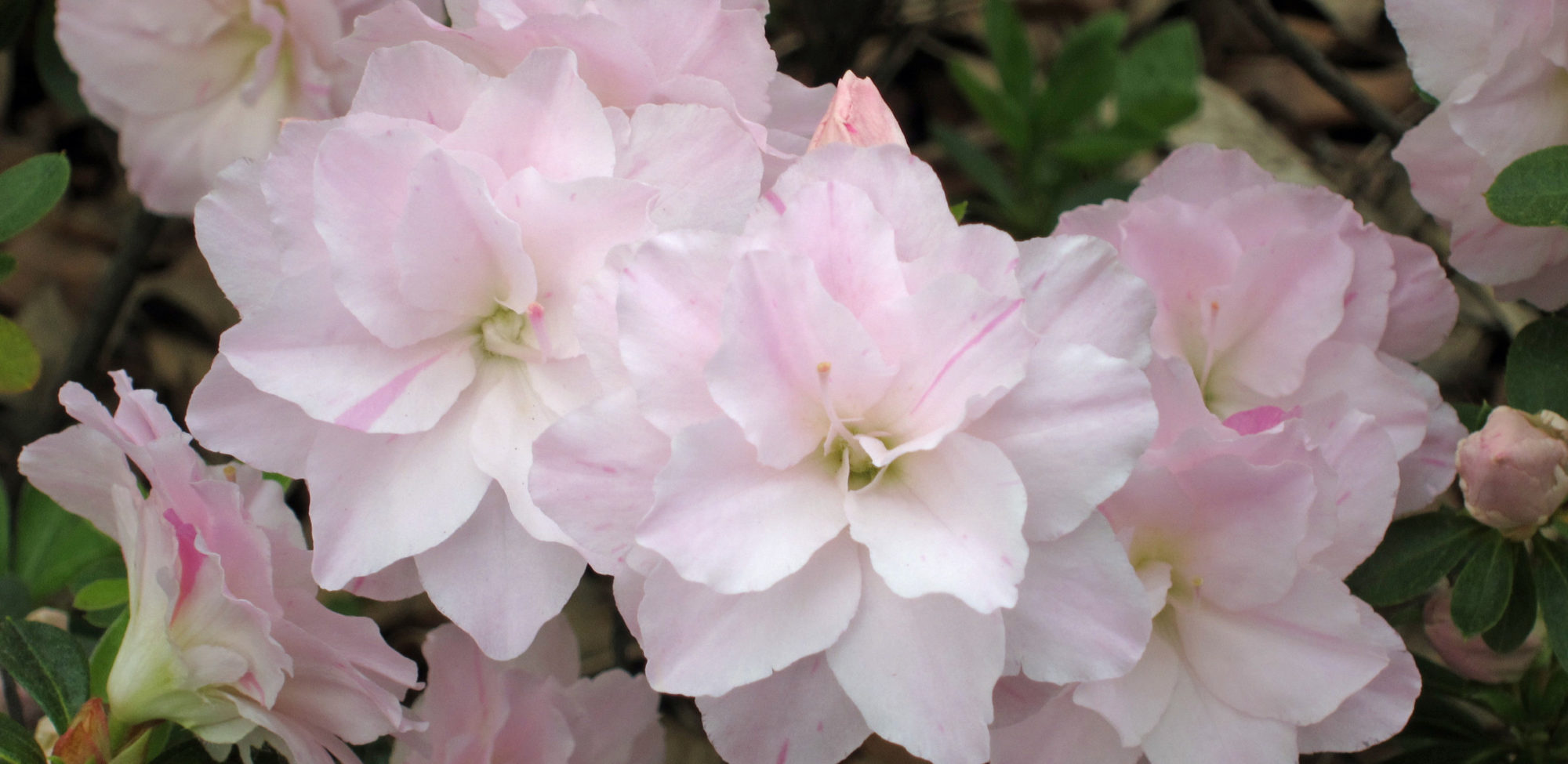Azalea Diagnosis || Leaves | Twigs |Flowers | Plant | Related pages ||
Azaleas are generally healthy plants when their basic cultural requirements are met. However, they are subject to a number of problems caused by infectious agents, insect pests, weather and nutrition deficiencies. This table, organized by the major part of the plant affected, may help determine the cause of the problem.
| Symptoms | Disease or Pathogen | ||||||
| I. | Leaves Affected | ||||||
| A. | Leaves with definite brown areas | ||||||
| 1. | Localized brown or red-brown spots | Leaf spots | |||||
| 2. | Browning of leaves at edges and near tips | Winter injury | |||||
| 3. | Brown areas turning white with small black dots | Pestalotia leaf spot | |||||
| B. | Leaves off-color | ||||||
| 1. | Leaves off-color with white, powdery coating | Powdery mildew | |||||
| 2. | New growth chlorotic or yellow | Nutrient deficiencies Leaf and flower gall (Exobasidium) | |||||
| 3. | Yellowish mottling on upper side of leaves; rolling of margins; flat, oval, transparent insects evident on bottom side of leaves | Whitefly | |||||
| 4. | Whitish specks on upper surface of leaves; sticky spots on lower surface of leaves | Lace bugs | |||||
| 5. | Leaves off-color; loss of vigor; no insects evident on foliage | Root problems | |||||
| 6. | Leaves off-color; small “insects” evident on foliage | Mites | |||||
| C. | Leaves eaten or chewed at margins in half-circle pattern | Black vine weevil | |||||
| D. | Leaves distorted | ||||||
| 1. | Leaves thickened or fleshy, turn pale green or whitish | Leaf and flower gall (Exobasidium) | |||||
| 2. | Leaves roll and droop; no insects evident | Water stress Canker Root problems | |||||
| II. | Branches and Twigs Affected | ||||||
| A. | Terminal buds and leaves turn brown | ||||||
| 1. | Stem shrivels and definite canker forms; leaves roll and droop | Phytophthora dieback Phytophthora syringae blight | |||||
| 2. | Cankered area is rough from protruding bodies of fungus; edges of leaves may be affected first, and then entire leaves turn brown | Botyrosphaeria dieback Phomopsis dieback | |||||
| B. | Ends of branches die; borer in stem tissue; yellow-white larvae about 1.3 cm long; small, black adults with three yellow transverse stripes on abdomen | Rhododendron borer | |||||
| C. | Buds and twigs affected; primarily on azaleas, buds and twigs killed | Bud and twig blight (Briosia) | |||||
| III. | Flowers affected | ||||||
| A. | Flowers thickened or fleshy with gall-like appearance | Leaf and flower gall (Exobasidium) | |||||
| B. | Flowers water-soaked, collapsed | Ovulinia petal blight | |||||
| IV. | Entire plants affected | ||||||
| A. | Plants become thin, wilt, and eventually die; major portion of root may be dead | Crown rot or wilt (Phytophthora) Crown gall (Agrobacterium) Cylindrocladium blight | |||||
| B. | Plants wilt and die suddenly; bark chewed from roots and basal stems | Black vine weevil grubs | |||||
| C. | Plants with poor color; definite, easily removed growths on stems and petioles | Scale insects | |||||
__________
* Reprinted by permission from Compendium of Rhododendron and Azalea Diseases, second edition, ISBN 0-89054-436-0 , published by the American Phytopathological Society.
related pages>
Azalea Problems (parent page)

